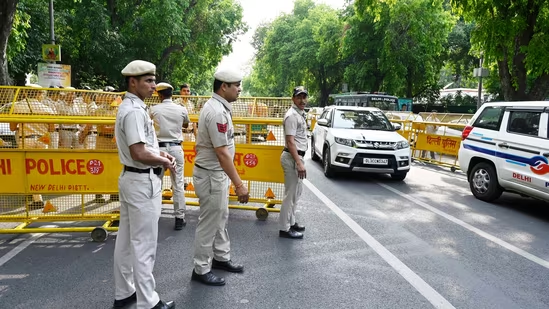The currency opened at 82.19 and touched an all-time low of 82.33 early in the day, and did not recover.
New Delhi: The rupee plunged by 16 paise to close at an all-time low of 82.33 against the US currency on Thursday due to a surge in US bond yields, risk-averse sentiment among investors, and firm crude oil prices.
The home currency was trading at 82.30 a dollar at 9:30 am, down 0.5% from its previous close of 81.89. The currency opened at 82.19 and touched an all-time low of 82.33 early in the day, and did not recover.
On Thursday, the Indian currency for the first time closed below the 82 level against the greenback. It plunged 55 paise to close at a record low of 82.17 against the US currency.
“An uptick in crude prices has caused concerns around the trade deficit to resurface. US rates staying higher for longer is not helping the capital account,” IFA Global Research Academy said in a note.
Moreover, the Reserve Bank of India (RBI) seems to have become conservative in spending reserves, it said, adding that these factors are causing the rupee to adjust.
The dollar index, which gauges the greenback’s strength against a basket of six currencies, was trading 0.14 per cent down at 112.10.
A Reuters poll has said the rupee will trade near its record low against the mighty greenback beyond this year, buffeted by rising oil prices and an aggressive U.S. Federal Reserve rate-hiking campaign.
The rupee has fallen over 10% this year and reached an all-time low of 82.33 per dollar on Friday, news agency PTI reported, even though the Reserve Bank of India continues to sell its forex reserves to defend the local currency.
While it found brief respite after the RBI delivered its fourth consecutive interest rate hike last week, a widening trade deficit driven by rising oil prices and a slowdown in exports have dragged the rupee down.
On Wednesday, a cartel of oil producers led by Saudi Arabia agreed to drastic production cuts, sending Brent Crude futures to a three-week high of $93.99 per barrel.
That rise in crude prices will add to the country’s inflation trouble and the widening current account deficit (CAD) as India imports over 80 per cent of its oil needs.
The greenback, which has been rising this year in what seems to be an irreversible trend, fell on Thursday, encouraging some risk-taking and helping the commodities complex, where oil was trading around its highest level in three weeks.






























